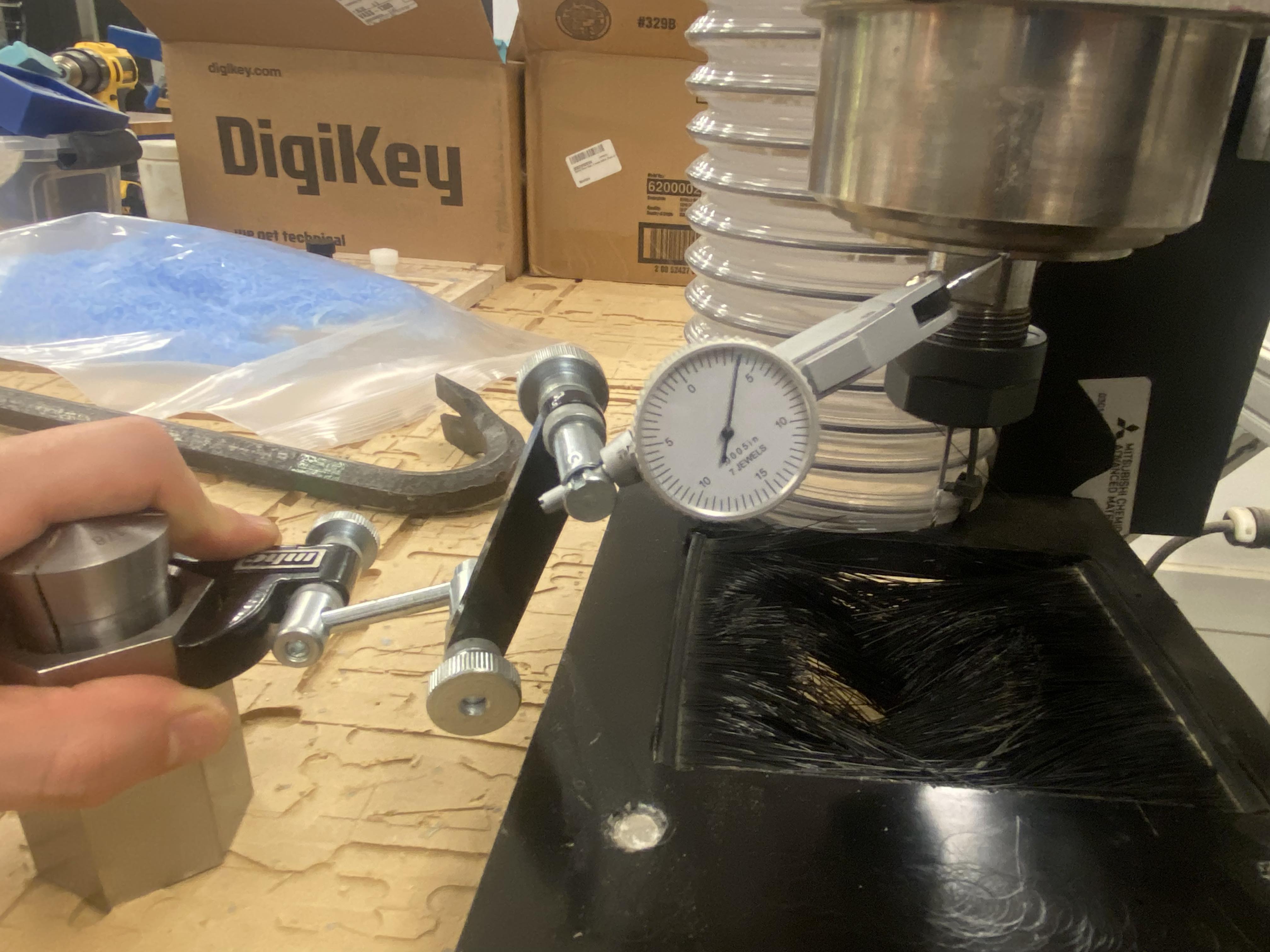
This week, we did the router safety training in EDS. We also tested/learned about various design rules of the router, including runout, alignment, fixturing, speeds, feeds, materials, and toolpaths.
Anthony showed us how to set up the tool to measure runout, as shown below. We found about half a thou (0.0005") of runout via the spindle along, and about three-quarters of a thou (0.00075") of runout with the spindle and tool combined.
There were not many alignment considerations to make based on the nature of the stock materials we used and the way Anthony set up the router. For molding and casting week, aligning the wax block was easy; Anthony zeroed the router with one of the wax blocks, then put in work holdings against which we could always align ours, removing the need to even zero the router for each job that week. For CNC week, we were able to easily align the OSB squarely, and then zeroed one of the corners with the tool attached to the router.
Fixturing was similar to alignment in that there was an established process in the lab. For molding and casting week, we used industrial-strength hot glue to fix the wax. For CNC week, we used composite nails, made of plastic so as to not damage an endmill that comes into contact with them and relatively weak under shear force so we can pull the milled OSB off the router without much difficult.
Because of the soft stock materials used, we consistently used very high base spindle speeds (~18000 RPM). In some cases, members of the group could push the spindle speed even higher during their jobs.
The feedrate sat between 80 and 100 feet/min on the router, depending on the size of the endmill. This is another tried and true value in EDS which we were told to use as our feedrate.
We used soft materials in our assignments for the two weeks during which we used the router: wax in molding and casting week and OSB in CNC week. As such, we could afford to set much higher feeds and speeds than if we were cutting metal in a mill, for example. These materials are inexpensive and convenient to quickly cut through.
For this week, 2D contours were essentially the only toolpath needed, as we were cutting 2D parts out of OSB to be fixtured together into 3D assemblies. However, in inside corners, dogbones were needed, and we also created tabs along the cutting path so that the parts didn't fall off of the OSB before the job was finished. A reciprocating saw was all that was necessary to detach the tabs and free our parts from the board.